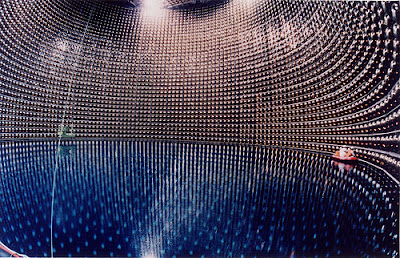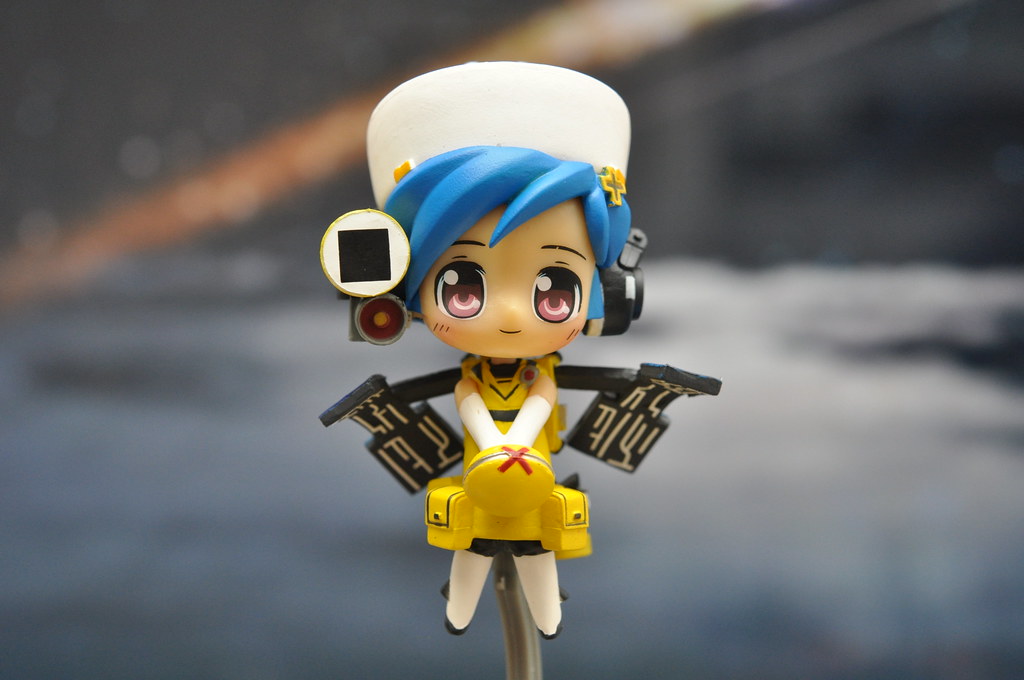Japanese Super Science
Japan has some amazing science projects. The Super-Kamiokande observatory was designed to detect neutrinos from the sun and is buried 1 km underground in an old mine. The Hayabusa is a space probe that rendezvoused with an asteroid in deep space and returned some samples to Earth. Finally, the Earth Simulator 2 is a massive parallel computer that is simulated global climate models. These are big, super science projects. You can also see some exhibits about these items at the Miraikan museum on Odaiba, Tokyo.
Super Kamiokande
http://en.wikipedia.org/wiki/Super_Kamiokande
Super-Kamiokande (full name: Super-Kamioka Nucleon Decay Experiments, abbreviated to Super-K) is a neutrino observatory which is under Mount Kamioka near the city of Hida, Gifu Prefecture, Japan. The observatory was designed to search for proton decay, study solar and atmospheric neutrinos, and keep watch for supernovae in the Milky Way Galaxy.
The Super-K is located 1,000 m (3,300 ft) underground in the Mozumi Mine in Hida's Kamioka area. It consists of a cylindrical stainless steel tank that is 41.4 m (136 ft) tall and 39.3 m (129 ft) in diameter holding 50,000 tons of ultra-pure water. The tank volume is divided by a stainless steel superstructure into an inner detector (ID) region that is 33.8 m (111 ft) in diameter and 36.2 m (119 ft) in height and outer detector (OD) which consists of the remaining tank volume. Mounted on the superstructure are 11,146 photomultiplier tubes (PMT) 20 in (51 cm or half a meter) in diameter that face the ID and 1885 8 in (20 cm) PMTs that face the OD.
Hayabusa Space Probe
http://en.wikipedia.org/wiki/Hayabusa
Hayabusa (はやぶさ?, literally "Peregrine Falcon") was an unmanned spacecraft developed by the Japan Aerospace Exploration Agency (JAXA) to return a sample of material from a small near-Earth asteroid named 25143 Itokawa to Earth for further analysis.
Hayabusa, formerly known as MUSES-C for Mu Space Engineering Spacecraft C, was launched on 9 May 2003 and rendezvoused with Itokawa in mid-September 2005. After arriving at Itokawa, Hayabusa studied the asteroid's shape, spin, topography, colour, composition, density, and history. In November 2005, it landed on the asteroid and collected samples in the form of tiny grains of asteroidal material, which were returned to Earth aboard the spacecraft on 13 June 2010.
Earth Simulator 2 Supercomputer
http://en.wikipedia.org/wiki/Earth_Simulator
The Earth Simulator (ES), developed by the Japanese government's initiative "Earth Simulator Project", was a highly parallel vector supercomputer system for running global climate models to evaluate the effects of global warming and problems in solid earth geophysics. The system was developed for Japan Aerospace Exploration Agency, Japan Atomic Energy Research Institute, and Japan Marine Science and Technology Center (JAMSTEC) in 1997. Construction started in October 1999, and the site officially opened on March 11, 2002. The project cost 60 billion yen.
ES was replaced by the Earth Simulator 2 (ES2) in March 2009. ES2 is an NEC SX-9/E system, and has a quarter as many nodes each of 12.8 times the performance (3.2x clock speed, four times the processing resource per node), for a peak performance of 131 TFLOPS. With a delivered LINPACK performance of 122.4 TFLOPS, ES2 was the most efficient supercomputer in the world at that point. In November 2010, NEC announced that ES2 topped the Global FFT, one of the measures of the HPC Challenge Awards, with the performance number of 11.876 TFLOPS.
Other Tokyo Excess Japanese Pop Culture Links
Super Kamiokande
http://en.wikipedia.org/wiki/Super_Kamiokande
Super-Kamiokande (full name: Super-Kamioka Nucleon Decay Experiments, abbreviated to Super-K) is a neutrino observatory which is under Mount Kamioka near the city of Hida, Gifu Prefecture, Japan. The observatory was designed to search for proton decay, study solar and atmospheric neutrinos, and keep watch for supernovae in the Milky Way Galaxy.
 |
| Kamiokande Detection Chamber with boat for scale. |
 |
| The PMT detectors look like giant light bulbs. |
http://en.wikipedia.org/wiki/Hayabusa
Hayabusa (はやぶさ?, literally "Peregrine Falcon") was an unmanned spacecraft developed by the Japan Aerospace Exploration Agency (JAXA) to return a sample of material from a small near-Earth asteroid named 25143 Itokawa to Earth for further analysis.
 |
| Extremely Cute Hyabusa-Tan Personification Flickr / TAKK_ |
Hayabusa, formerly known as MUSES-C for Mu Space Engineering Spacecraft C, was launched on 9 May 2003 and rendezvoused with Itokawa in mid-September 2005. After arriving at Itokawa, Hayabusa studied the asteroid's shape, spin, topography, colour, composition, density, and history. In November 2005, it landed on the asteroid and collected samples in the form of tiny grains of asteroidal material, which were returned to Earth aboard the spacecraft on 13 June 2010.
Earth Simulator 2 Supercomputer
http://en.wikipedia.org/wiki/Earth_Simulator
The Earth Simulator (ES), developed by the Japanese government's initiative "Earth Simulator Project", was a highly parallel vector supercomputer system for running global climate models to evaluate the effects of global warming and problems in solid earth geophysics. The system was developed for Japan Aerospace Exploration Agency, Japan Atomic Energy Research Institute, and Japan Marine Science and Technology Center (JAMSTEC) in 1997. Construction started in October 1999, and the site officially opened on March 11, 2002. The project cost 60 billion yen.
 |
| Earth Simulator 2 Cabinets Flickr / electric8sheep |
ES was replaced by the Earth Simulator 2 (ES2) in March 2009. ES2 is an NEC SX-9/E system, and has a quarter as many nodes each of 12.8 times the performance (3.2x clock speed, four times the processing resource per node), for a peak performance of 131 TFLOPS. With a delivered LINPACK performance of 122.4 TFLOPS, ES2 was the most efficient supercomputer in the world at that point. In November 2010, NEC announced that ES2 topped the Global FFT, one of the measures of the HPC Challenge Awards, with the performance number of 11.876 TFLOPS.
Other Tokyo Excess Japanese Pop Culture Links
- Cup Noodles - Nissin Pop Culture
- Kaiju (Monster-sized) Burgers
- Pocky Pop Culture
- Coffee Please, Not Tea - Tokyo Coffee Shops, Hario & Canned Coffee
- Gyudon From Yoshinoya and Sukiya and JAL Air Beef Bowl
- JAL Inflight Food (they even did Air MOS Burgers)
- The Konbini Song and Lawson Evangelion Tie-ins
- Giant Robot Toys - Macross, Godzilla, Gundam
- Alien Art - Haniwa & Dogu Figures (Jomon & Yayoi Periods)
- Japan's Amazing Love of All Things Cat
- Kowloon Walled City and Gunkanjima Island. Even showed up in the James Bond movie Skyfall.
- Emoticons and Densha Otoko
- Hello Kitty and Pokemon Airliners
- Japanese Super Science










Comments
Post a Comment